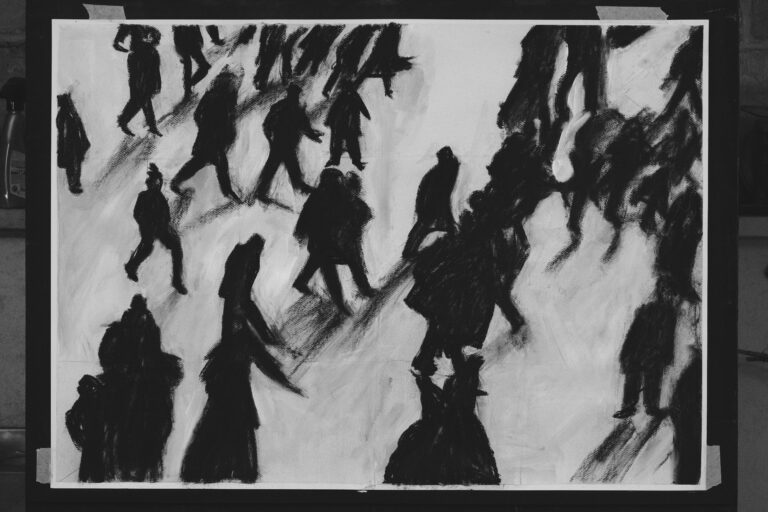Pino Guidolotti
Drawings 2004 - 2024
With a text by Paolo Mereghetti
May - July 2024
Pino Guidolotti
Drawings 2004 - 2024
With a text by Paolo Mereghetti
May - July 2024
OPENING HOURS
From May 17 to June 28, 2024
from Wednesdays to Fridays, 3 p.m. – 7 p.m.
Thursdays from 3 p.m. to 9 p.m.
Saturdays by appointment
The exhibition is extended until Friday, July 12
OPENING
Thursday 16 May from 6 p.m. to 9 p.m., from 7 p.m. at the piano Silvia Giliberto of the Antonia Pozzi Academy, Milan
Free access with Assab One 2024 membership card (€10)
SPECIAL OPENING ON THE OCCASION OF PIANO CITY MILANO
Saturday May 18, from 4 p.m. to 8 p.m.
At 6 p.m. Antonia Pozzi Academy presents Johannes Brahms’ Hungarian Dances, a duet piano concert (Matilda De Angiolini, Alberto Dalgo, Lorena Portalupi, Silvia Giliberto).
For more information write to info@assab-one.org
Almost 10 years after his last solo show in the spaces of Assab One, Pino Guidolotti returns with an exhibition dedicated to his lesser-known production than photography, but one that has always been present in his artistic practice: drawing. A series of new works in charcoal on paper inhabits Studio 3. Large-format drawings flow nonstop on the walls of the room. Pino Guidolotti plays the role of a silent and attentive director, while the images shown appear to be those of some silent film, in black and white. Without ever neglecting his photographic vision, the scenes speak of everyday life, of people walking in an undefined space-time, of empty but set tables, of bars and houses where unknown shadows dwell.
The drawings are the expression of Pino Guidolotti’s most intimate and mostly unpublished artistic research. Those on display at Assab One are snapshots of his life in Salento, the result of his unmistakable perspective in observing and seeing the world, nature and beings around him.
Music program by Antonia Pozzi Academy, Milan.
Throughout the month of June, every Thursdays, Assab One hosts a wide-ranging musical program entitled L’ascolto e lo sguardo: un pianoforte ad Assab One (Listening and Looking: a piano at Assab One), in collaboration with the Antonia Pozzi Academy and the Antonia Pozzi Civic School of Music (Corsico).
